J S Ellington
J S Ellington
Blog
Art Glossary
Added Aug 23, 2018
This glossary will be periodically amended as time permits, adding more terms.
Abstract art: art that does not attempt to represent external reality, but seeks to achieve its effect using shapes, forms, colors, and texture
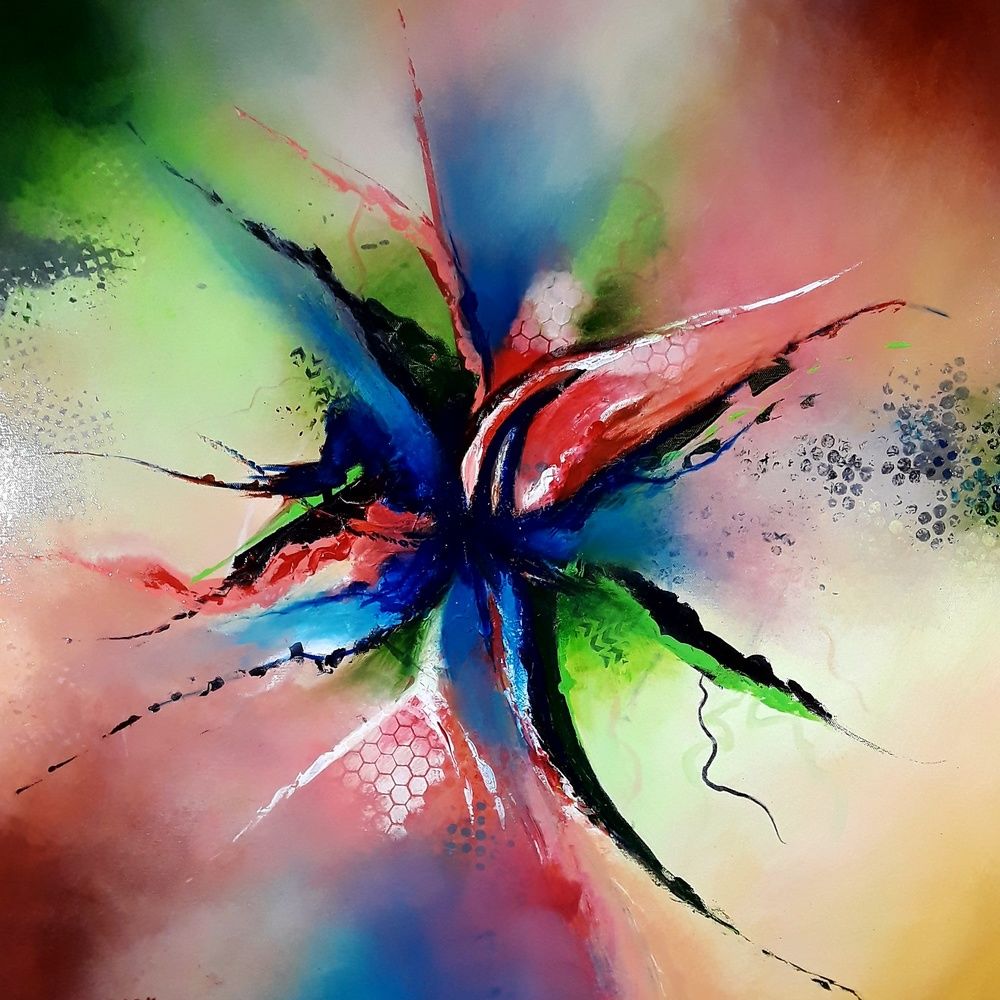
Contemporary art: art that is created in our time, after the 1950s to 1960s.
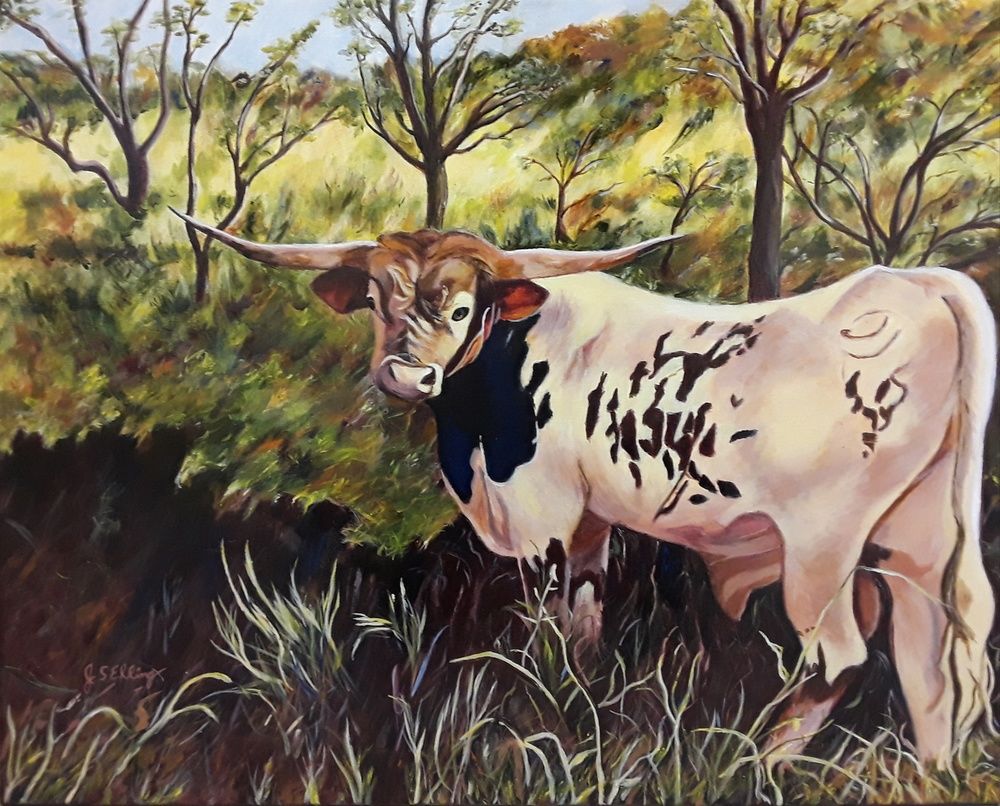
Giclee print: refers to a technology that uses high-quality inkjet printers to reproduce art. Reproductions can be on various materials such as canvas, fine art paper, and others.
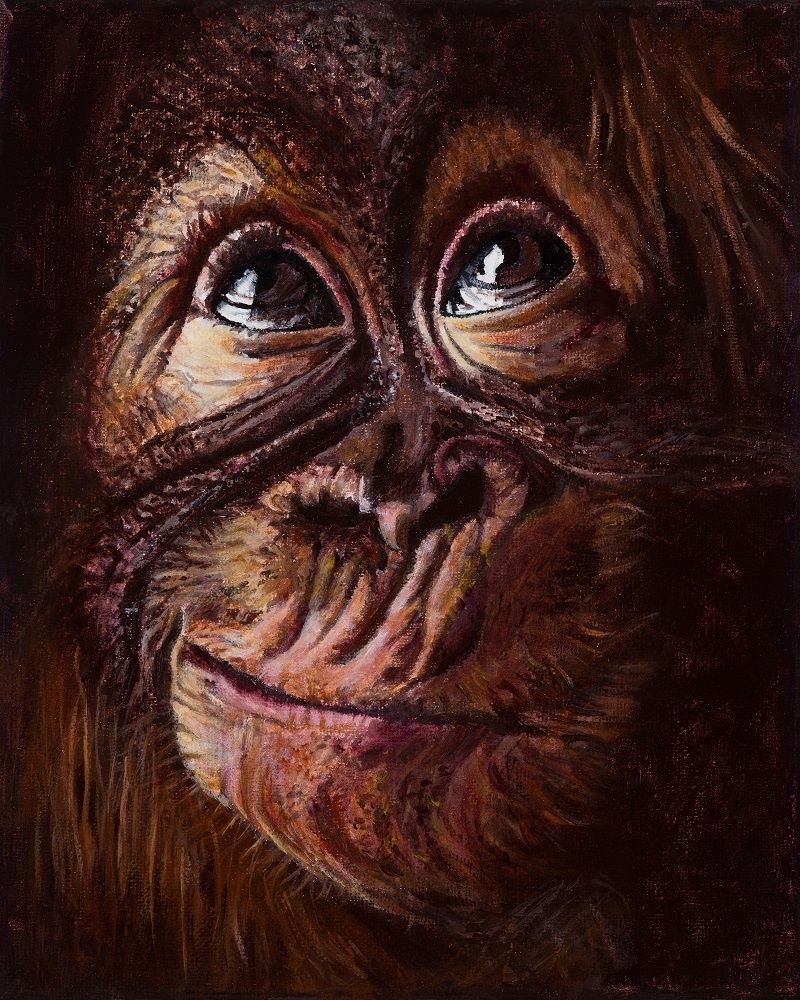
Impressionist art: art term that was first used in France during the 19th century to describe a trend toward painting the more mundane things of everyday life as opposed to grander subject matter showing events such as major battles. The impressionist artists paint an ‘impression’ of what they see rather than painting in a realism style. Impressionism seeks to capture the movement and life of what is happening in the present moment.
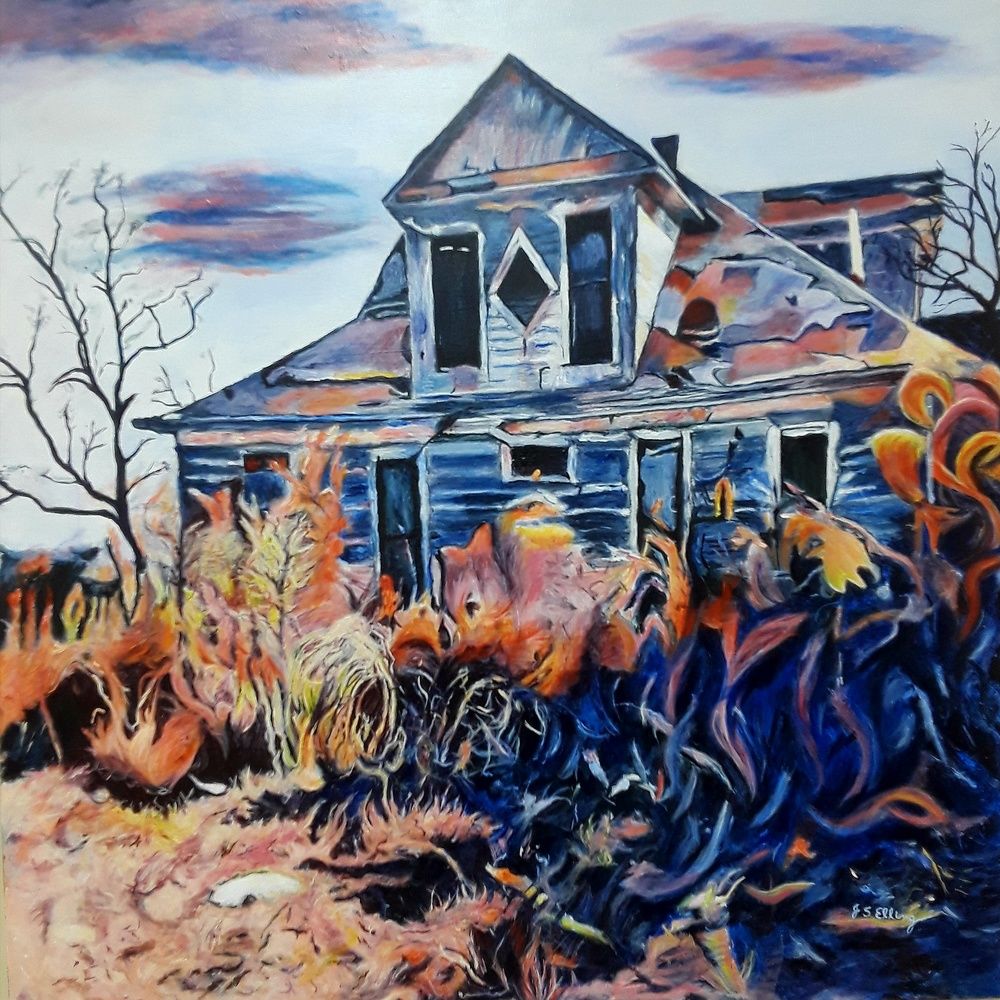
Modern art: art created between the 1860s to 1880s and the 1950s to 1960s.
Photorealism: art that is realism art but generally referring to art created from studying a photograph and painting an exact duplicate on canvas.
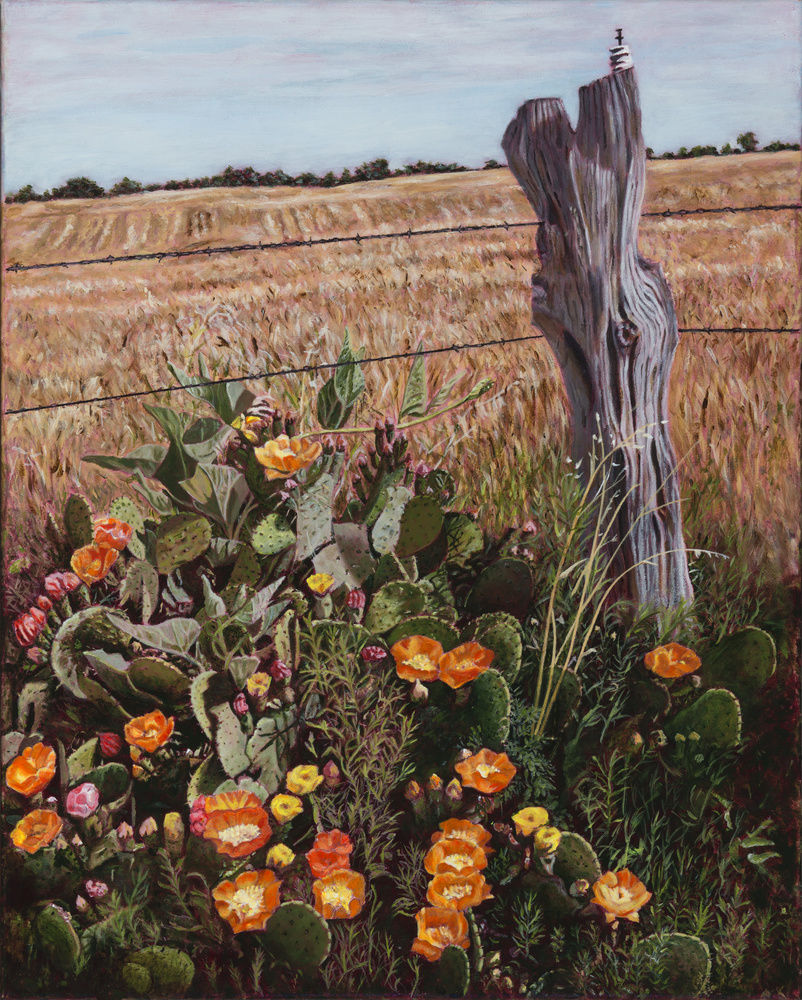
Realism art: the term began in the 19th century in France to describe art that attempts to show the reality of what it depicts without the addition of artistic conventions with regard to form and color.
Surrealism art: art that reinvents the human experience, doing away with a rational vision of life and depicting more of the experience of the unconscious and dreamworld. It represents the unexpected and the uncanny instead of the conventional.
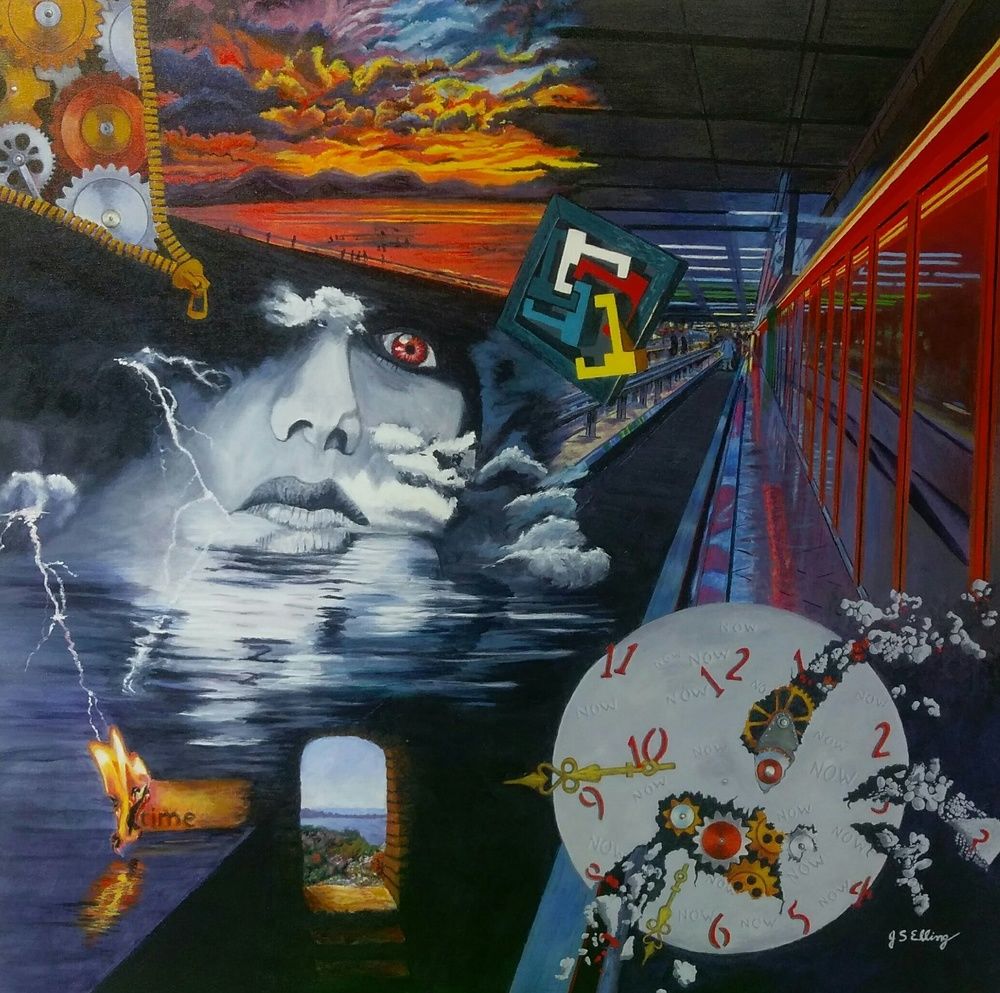
A Passion for Art Collecting... on a Shoestring
Added Aug 14, 2018
 Collecting is fun! The world of art affords wonderful social interaction with others. Art appreciation even builds a connection between people who may have very little in common otherwise. Lifelong friendships are often made through art, and there are certainly lots of interesting artists and art lovers to meet and enjoy along the way.
Collecting is fun! The world of art affords wonderful social interaction with others. Art appreciation even builds a connection between people who may have very little in common otherwise. Lifelong friendships are often made through art, and there are certainly lots of interesting artists and art lovers to meet and enjoy along the way.
How often do you look for something fun to do, maybe on a weekend, but can’t settle on anything? Especially, when couples spend time together, they may find it difficult to find an activity that fits with both of them. Art collecting might be just what you are looking for! Just sharing why one of you is drawn to a particular piece can give insight into each other’s heart and deepen your closeness and understanding of what makes each of you tick.
You can probably start with a course at your local college on art appreciation and attend local gallery exhibitions and public art fairs to get a feel for what you like. Chances are there are local galleries in your town that would love for you to visit. Hours of browsing beautiful art online can begin to reveal a pattern in what you seem to gravitate toward.
When you have gotten your feet wet looking around and visiting, you can start small. Small artworks and art prints by artists you like allow you to enjoy the spirit and character of the artist’s work but typically cost much less. In the beginning, consider small pieces by established and lesser-known artists. Many collections started with pieces from unknown artists whose works later became sought after and valuable. Chances are, if you like it, others will too. Even with artists who are not “famous,” the price of their work tends to increase as more of their pieces sell.
Andrew Shapiro, an art gallery owner, has boasted that he bought an unsigned lithographic print by Henri Matisse for $30.00. He was quoted as saying, “The value of it was that I chose it when no one else spotted it. Starting an art collection is about using your eye and not listening to everyone else.”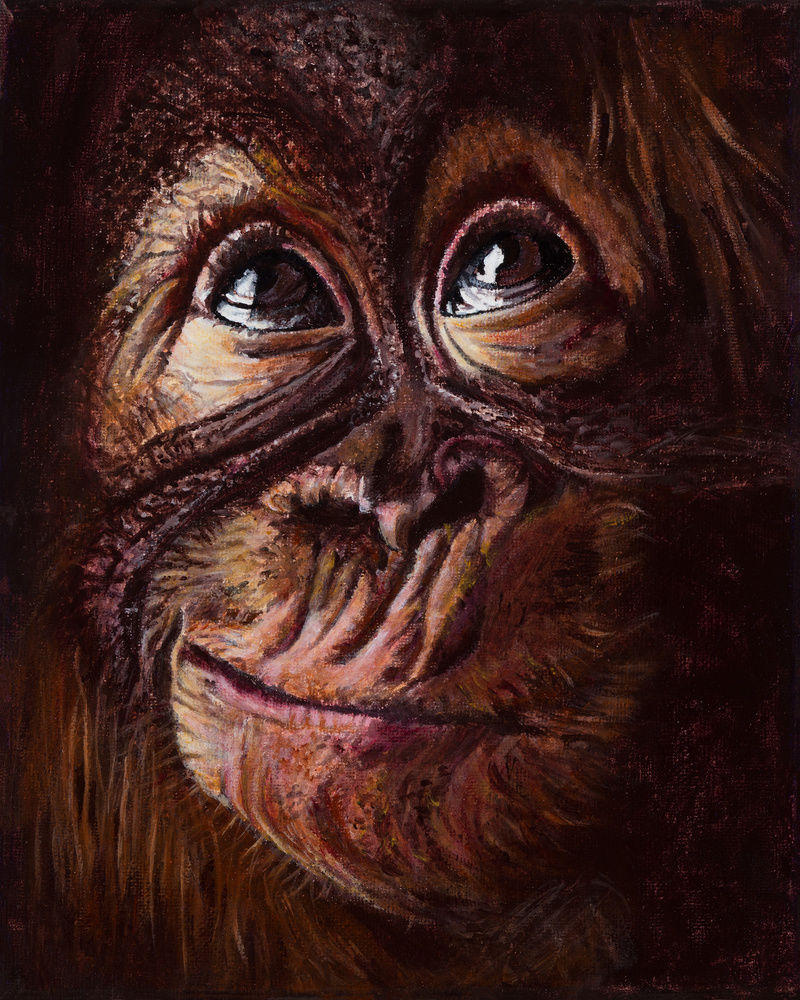
Art makes you think. It can create an emotional response. It can open your eyes to new ways of seeing the world. Having beautiful art that brings you satisfaction on the walls in your home enriches your life, adds freshness and color to your living space, and is a testimonial to your taste. Artworks in your home evidence your aesthetic sensitivity.
Even if you add pieces that are not soul-searching masterpieces, beautiful artworks and graceful sculptures are always a smart complement to your daily life and home space. You are rewarded by the sheer joy of seeing and feeling it. Some “art snobs” may chide you for selecting artwork that matches your couch, calling you insecure because you feel a need to impress someone else with your decorating sense. I say, it is your money! Buy what you love, and match your couch if that is what you want to do. Then, stand by that decision wholeheartedly when you are engaged to discuss it.
What about supporting the arts? Collecting because artists need collectors? I can attest to that one. To keep doing what we love, artists depend on art lovers’ patronage. With your patronage, you become a vital part of an artist’s legacy. There is no greater compliment for an artist than to sell a piece, especially to a collector who has followed their work and even bought from them before. The income is necessary but so is that type of encouragement.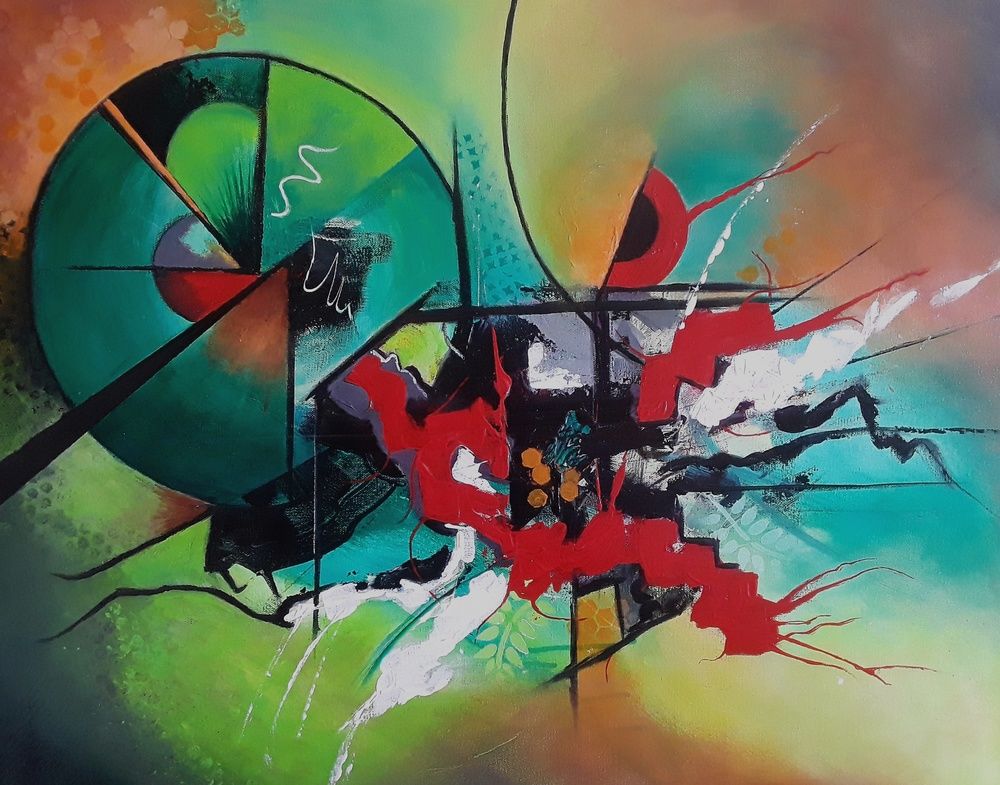
What about art as an investment? It certainly can be. Good art appreciates in value, and collectors with a good eye can definitely profit. But buying an artwork because of its potential resale value brings with it the risk of having a work long term that you may not enjoy should a particular piece not offer a later profit. It makes more sense to buy work you love, ideally from the beginning of a favorite artist’s career when the work is most affordable. That way, you will always enjoy your collection whatever the art market does.
So the bottom line is to discover what art you are most drawn to, enjoying the process along the way. What art do you find calming? What art makes you think, imagine, and/or wonder? Which artists do you most appreciate? Is there a theme to the art you love? Finding a niche that affords you a passion will help you build relationships with artists and other art lovers. And, of course, it is also just fine to follow your instincts, collecting a diverse body of artwork without rules. Just buy what you love, even if you can’t explain why.
Gallery Wrapped Canvas or Studio Wrap or Museum Wrap?
Added Aug 6, 2018
Depending on where you research these terms, they have been used slightly differently. Below is an example of one of my ready to hang paintings with a gallery wrapped edge.
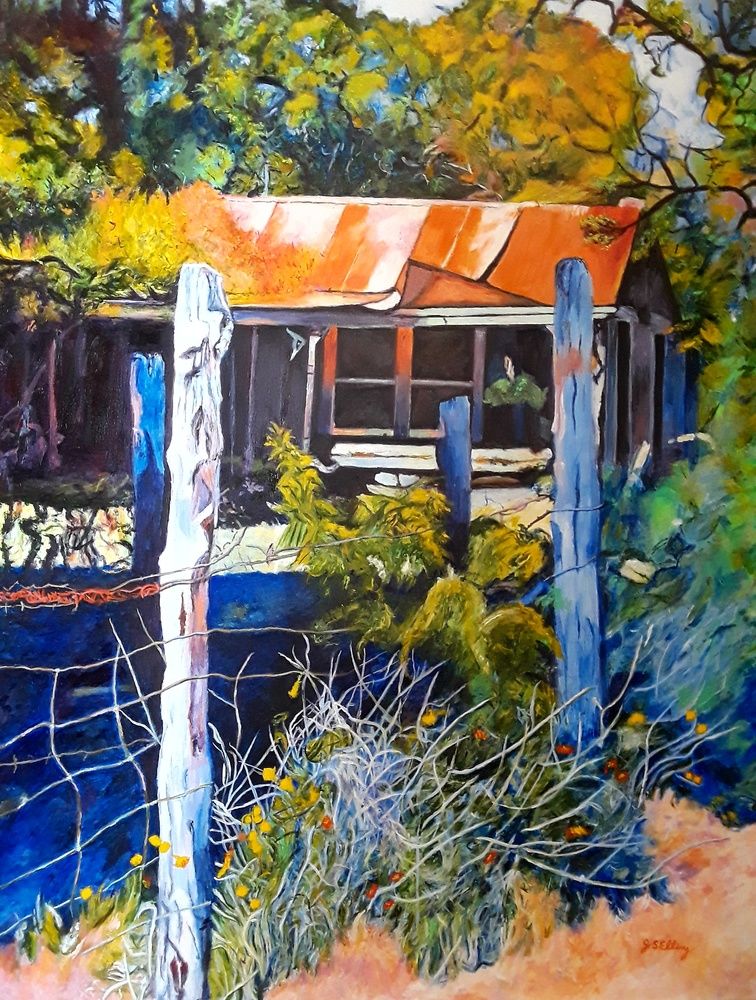

Gallery wrapped canvas usually has a wider side edge than a studio wrap. Any staples or fasteners are on the very back and not on the edges. This type of canvas looks great even unframed and is considered ready to hang. The edges can be finished in several ways. One way is where the image of the artwork is continued on the sides as shown in the photo on the left or there can be mirrored edges or museum wrapped edges.
Mirrored edge gallery wrapped canvas shows a mirror image continuing onto the edges.
Museum wrap is a gallery wrapped canvas with the edge painted a solid color.
Studio wrapped canvas has a thin side edge, usually ½ inch or so and may have staples showing on the side. The edge is left unpainted. This type of wrapped canvas usually looks best framed before hanging.
Sometimes I use wrapped canvas with narrow edges that are painted so that the piece is ready to hang. Below are some examples.
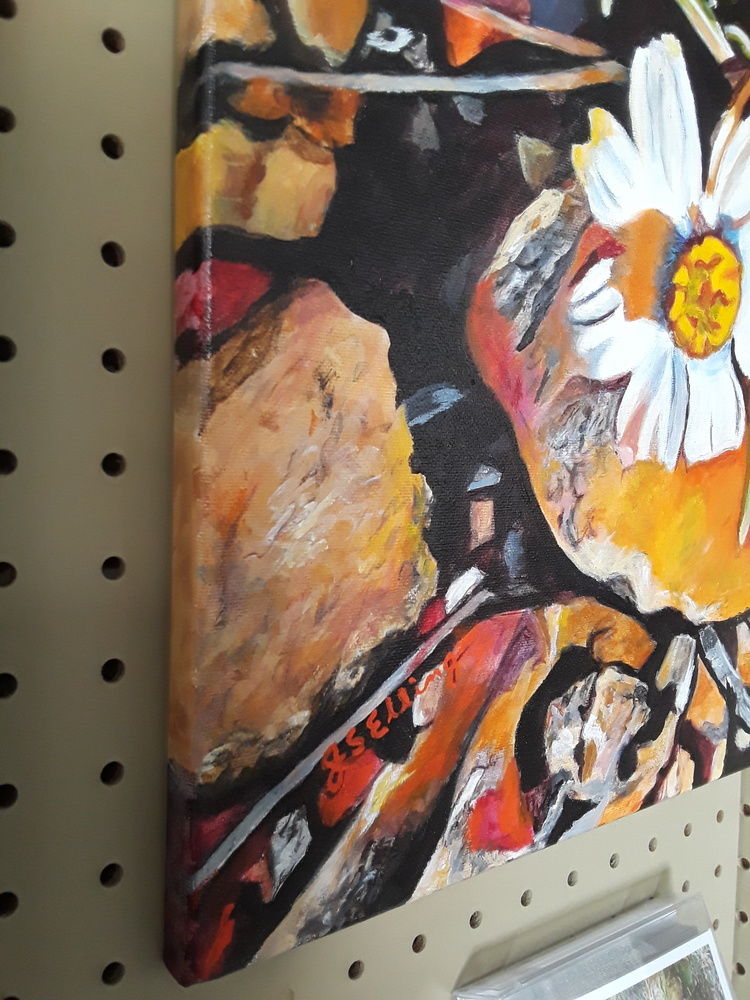
HOW TO CARE FOR YOUR ACRYLIC PAINTING
Added Aug 1, 2018
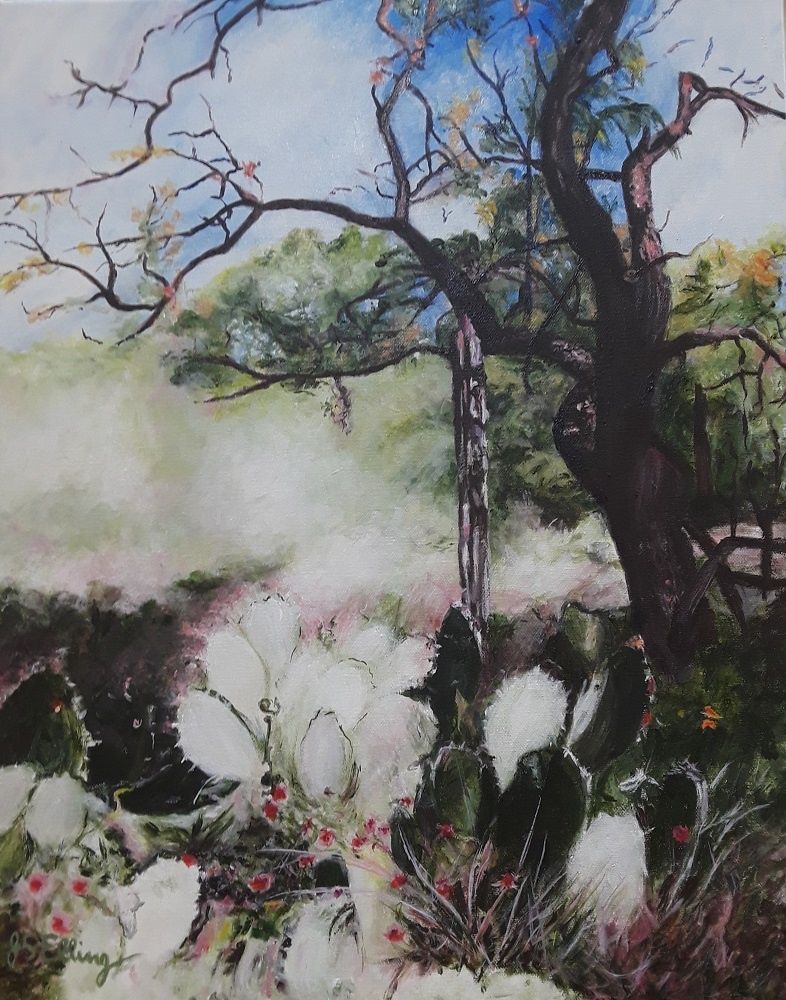 I prefer to work with water-soluble acrylics for the sake of my allergies and because they have a shorter drying time than oils, allowing me to paint continuously while I am “in the zone.” I use Liquitex Heavy Body Acrylics because of their high quality and versatility. They are extremely flexible, they are non-yellowing, they are water resistant, and once they are dry, they resist marring and scratching.
I prefer to work with water-soluble acrylics for the sake of my allergies and because they have a shorter drying time than oils, allowing me to paint continuously while I am “in the zone.” I use Liquitex Heavy Body Acrylics because of their high quality and versatility. They are extremely flexible, they are non-yellowing, they are water resistant, and once they are dry, they resist marring and scratching.
I have listed below a few ideas to help you care for your acrylic painting so that it stays clean and bright.
*I am aware that most of my customers are budget wise, and that is important to me. That is why my original artwork is shipped ready to hang so that framing is not necessary.
Gallery wrapped canvas has a modern look when hung without a frame due to its 1-1/2-inch-wide edges. Even when I use a stretched canvas with only half-inch edges, I paint them so that they look fine when hung without a frame.
Since I use only high-quality acrylic paints and finish with Liquitex Gloss Medium and Varnish for acrylics. It is not necessary to protect my paintings with glass, because these products protect my acrylic original paintings from scratches, sunlight and dust. The varnish also makes the colors pop and gives the surface a sheen that I love. The varnish also makes the artwork easier to clean.
I don’t prefer the look of any original painting when seen through glass due to added glare. The only time I recommend glass is to protect the layers of collages and prints on fine art paper due to their tendency to degrade with exposure to moisture and the difficulty of keeping them clean if hung without a frame and glass.
*Original paintings, especially if they have subtle color nuances, need good light when displayed. Indoor soft lights directed at the painting or indirect light from a window are best. Even though the varnish resists damage from UV light, it is only reasonable to protect your painting from direct sunlight. Years of harsh exposure may eventually have an effect.
*My original acrylic paintings are created with high contrast. With time, dirt, dust, and oils can collect on the surface, possibly causing the visual contrast to be decreased. Therefore, it is important to keep the surface clean.
To clean, gently brush the surface with a clean natural-bristle brush (such as one used to apply loose face powder). Then gently wipe with a damp soft cloth or towel, working in small circles over the canvas.
Do not use solvents such as ammonia, bleach, alcohol or turpentine. They will damage your painting.
*If your painting ever leans against an uneven surface for a time, it could develop a dent or stretched-out spot. Good old hot water, applied with a paint brush to the back side of the canvas where the dent is will allow the canvas to tighten up, making the dent disappear. I even use this method when I feel that a canvas is not stretched tightly enough onto its stretcher bars, and to be honest, I have even had success with a squirt of cold water to the canvas back, applied with a spray bottle. Voila! It tightens right up.
*With a little care, your collection of acrylic paintings will be archival, remaining bright and beautiful over the years so that you can pass it on to the next generation of art lovers.
What Is Talent and Who Has It?
Added Apr 16, 2017
My Random House dictionary defines talent as, "A special natural ability or aptitude." I think that is right. If it is, then everyone has talent! It may not be the talent they think they want, but it is there. Nature knows balance, and it constantly seeks to restore it. That means there is a reason every person is here. Somehow, they add something to life that no one else could bring.
I have heard, "I have absolutely no talent," from a lot of people over my lifetime. Just because you want to be a world-class singer, and you can't even carry a tune, doesn't mean you aren't talented. Just because you can't dance, draw, paint, or solve complicated math problems does not mean you are not talented.
Talent doesn't have to convey fame. It is just the characteristic that makes each person so valuable to life in a special way.
I will illustrate my point by enumerating some of the talents in the people who have graced my life. I have several friends who seem to know how to unconditionally love and accept others. Some of my friends know how to give support in a special way. A couple of people in my life have made me laugh more easily than any famous comedian could. Besides his patience and sensitivity, my husband has a talent for channeling his focus 100% into whatever task he is working on. I am in awe of others for their extraordinary creative ability. My uncle, who is 95, completely lights up a room with his smile. I could go on.
But you still want to know how people become talented at art, singing, math, etc. Don't you? This is where it really gets interesting to me.
Gallup.com says, "Although talents, skills, and knowledge are each important for building a strength, talent is always the most important. The reason is that your talents are innate and cannot be acquired, unlike skills and knowledge. For example, as a salesperson you can learn your products' features (knowledge), you can be trained to ask the right open-ended questions (a skill), and you can practice making a sale (investment). However, the innate tendency to push a customer to commit at exactly the right moment, in exactly the right way must be naturally occurring and cannot be learned."
Talent can be hidden, even from the one who possesses it, until it begins to be explored and exercised. You say you have no musical ability. Have you taken a class, practiced and failed, or tried to develop a musical talent in some other way? If not, then you cannot know that you are not talented in music. From the same Gallup source above,"The latest science suggests we are all capable of extraordinary performance in some domain of expertise."
Talent is described by Psychologist Dean Keith Simonton as a package of personal characteristics that accelerates the development of expertise or improves performance in an area where a certain amount of expertise exists. From this, we can conclude that the characteristic that facilitates getting better faster at something is talent.
Past researchers in the realm of talent believe that talent is usually developed only after 10 years of concentrated practice in a certain discipline. But there are exceptions to this rule. Some are able to hone their talent much, much faster. Determination, focus, and motivation can allow more rapid development in a person when compared to another person who is lacking those characteristics.
Recent studies in epigenetics have pointed to the fact that heredity is not the final determiner in who has talent. Environment plays a bigger role. Consider a young man, for example, who may have shown exceptional ability as a violinist, but he was born to parents who were uneducated, poor, and may have even discouraged his desire to take up music. Compare that to the same young man who was given a violin as a child. Say he was curious enough to pick it up and play with it. Then he noticed violinists performing and enjoyed their music. Then maybe in school he chose the violin as his band instrument since he already owned one. From there on, given the right amount of encouragement and desire to learn and excel, he may have become "quite talented."
So what can we do to find our talent or help our children find theirs? Keep looking. Explore areas that seem interesting or promising. Once a person finds the endeavor that puts them in "the zone" that matches their unique combination of personal characterististics, it can be nurtured so that it has every chance of developing into a talent.
We were raised to believe we should strive to be well-rounded individuals. That may be true until a strong interest, aptitude, or passion begins to show itself. After that, attempts at being well rounded get in the way.The way to develop talent is to be encouraged and supported to practice it diligently so that it has the best chance of reaching its highest point of excellence.
We Might Be Rednecks....
Added Apr 8, 2017
Jeff Foxworthy would probably feel that my husband and I qualify though we don't have a working TV sitting on top of a non-working TV. Speaking of TV, we rarely turn it on. We have too much we enjoy looking at on all sides of our property.
Our favorite thing to do is sit and have hot tea on the front porch or the back porch (both enclosed with resident rescued dogs) and watch the bunnies, quail, roadrunners, thrashers, cardinals, woodpeckers, an occasional skunk, an occasional rattlesnake, sparrows, finches, owls, hawks, and the list is almost endless. All of these animals make their home right here on our 5 acres. Wild boars can be a problem, and there is other wild life in the area, such as deer and coyotes, but they don't come onto our property much as far as we can see. We only mow about 2 acres of our property. The rest is wild and raw for the animals.
Are we rednecks because we don't fertilize, edge, and plant flower gardens? Maybe, but we love our wild plants. Here are some flowers that mother nature favored us with, just resting in the shade.
We have planted a fig tree, a couple of plum trees, a nectarine, a Hunsa apricot, a couple of blueberry bushes, and a blackberry. They are all young trees, not making much of a crop yet, but what they do make the woodpeckers pick clean. We don't mind at all, and we don't do anything to prevent their free access to the fruit, because it affords us the pleasure of their company.
As for rattlesnakes, they are considered our friends! We only kill one if it is a necessity. If they come out of the wild area we have provided for them and into our yard proper, we can't afford to allow them to be there. As stated before, we have 2 dogs living between the air conditioned/heated front porch and the front yard and 3 dogs living between the air conditioned/heated pack porch and the back yard. We were broken hearted to lose the 6th of our rescues just last month.
Below are pictures of the huge mesquite tree in our front yard and one just to the east of our yard. This property completely burned before we bought it, but these 2 beautiful mesquites and another, even larger one, were damaged but survived.
One or two of the mesquites, probably quite old, were killed by the fire, but we were too "redneck" to cut them down as the birds use them constantly, especially the woodpeckers. For 2 seasons in a row, we had 2 black-bellied whistling ducks roosting there for a few weeks. They were most likely migrating.
Anyway, One of the dead mesquites is a tortuous work of art in my opinion. Come to think of it, the live ones are too. That's one of my favorite things about Abilene, Texas. Even the elite property owners revere the mesquites and many allow them to remain in their yards when new houses are built.
To the south of our property is all cattle pasture. You can't probably see the cattle in the distance in the photo below, but they are a curious lot and often crowded up to the fence in an effort to see what's going on. Occasionally, cowboys on horseback are out there working the cattle. It is a glorious sight from the comfort of my front porch.
Below is a photo of our dirt road. It is a bit tricky after a rain not to get stuck, and our vehicles are always covered with the fine clay silt that settles after someone drives down the road. Another concern is that very often birds or animals will decide to dart across the road just as our car approaches. They are all precious to us, and so far we have had no casualties.
Third from the bottom is an image taken from inside my front porch, showing the cattle in the pasture.
Two images below are of my paintings inspired by views I found on our road. The bar ditch is built up from the road so that gourd plants and other natural foliage often cascade down from the field above to the dirt road below.
In case you haven't already gotten this impression, let me just come right out and tell you that I love my Texas. It is the reason for my series by that name.
Stay tuned! I have more inspirations for paintings from the beautiful views here north of Abilene, Texas, than I have time to paint, but I am at the easel as much as I can manage it!
Finding Your Passion
Added Apr 5, 2017
I was a pharmacist for 37 years. It was hard, stressful work, and I couldn't wait to retire. I counted the months. "When I am retired," I told myself, "I won't have to wake up early anymore. I won't have to be on a schedule. I can do anything I want to."
The truth is that retirement landed me in a reality where my long-time identity was erased. I know women go through that when they experience the empty-nest syndrome after the kids leave home.
I had always been a magnet for injured, orphaned, and abandoned animals. Now, without a job, the strength of that magnet increased. I still had to get up early. I still had to be on a schedule. I was too busy to do "anything I want to!"
At one point, we had 11 dogs, and we had sold our house and were living our romantic dream of living in an RV. I don't recommend that. Yes, we saved money on housing, but animals in need generate a lot of veterinarian expense. Especially, being dumped tends to create fear and mistrust that make animals hard to approach and help. By the time they can be wooed into trusting, they are often emaciated, injured, etc. There were also some aggression issues, and we tried to bring all the ones we could into the RV with us due to frequent extreme weather conditions.
You might guess that animal rescue was a passion for me. I am sorry to tell you that it was a compulsion instead. Instead of bringing me joy, it made me sad for the ones I couldn't save, and it depleted us financially.
I think I began to get a little depressed, though I didn't really recognize it. I must have told my husband 100 times during that first year after retirement that I was desperate for a passion, a reason for getting up in the morning that didn't involve saving an animal or solving a problem.
As the months clicked by, I got even more lost. My health started to go south. I felt pretty isolated because we had moved me and the dogs to a property we had bought in the country near Abilene, Texas, but we had no luck getting my husband's business started here. He had to stay in Midland, where he was in demand, and work. He commuted to our place near Abilene on the weekends. I began to feel that I was just waiting to die.
The idea of a passion kept coming up in me. I kept telling my husband how much I needed that, hoping maybe he knew what I was supposed to be doing with my time. He didn't.
I finally decided that it was critical for me not to give in to the feeling of being lost. I started to review the possibilities by looking back at creative things I had done. I had painted all of my life, but I never gave it much attention or time. I couldn't imagine that would be my "calling." Nevertheless, I knew I had to take a step--to try something. I decided to take an art class. After the first painting, I was hooked!
It turned out that the time the class was held was not convenient for me, so I just continued to paint on my own. I have never looked back. My art pursuit has given me my passion. It has given me a wonderful community of other artists to pal with and enjoy. Art gives me a new way to connect with other people.
Every painting I complete, especially abstract works, is "free" therapy for me. Each one brings some kind of mini satori.
Why am I sharing all of this? Because, I know this is a common problem. People often die soon after retirement, I think because they "let" their loss of identity convince them that life is over for them.
I won't pretend to try to tell you how to find your passion, but I am convinced there is a pursuit for you that will qualify. You are the only one who can find it, and you have to start somewhere. Don't spend as much time as I did bemoaning the fact that you haven't found it.
If you haven't found your passion, start looking for it. Take a step. That step may lead you directly there or it may lead to another step that leads you to it. Don't stop until you find it. I am convinced that your passion is looking for you!